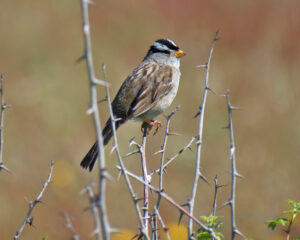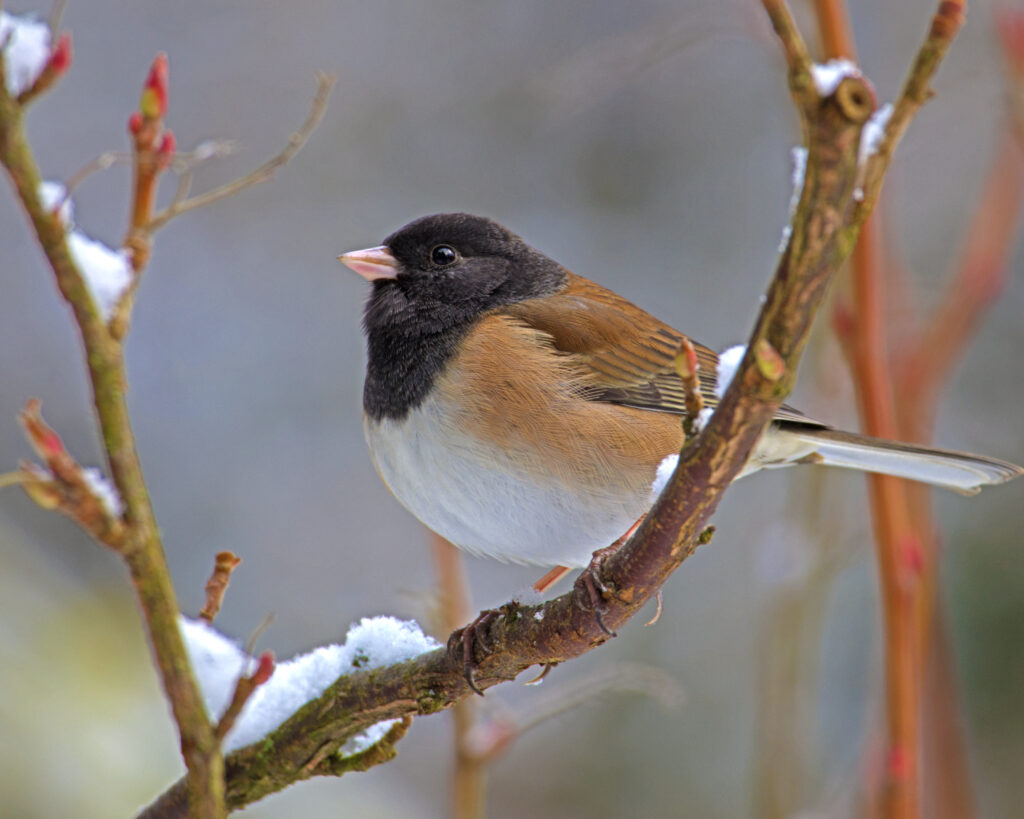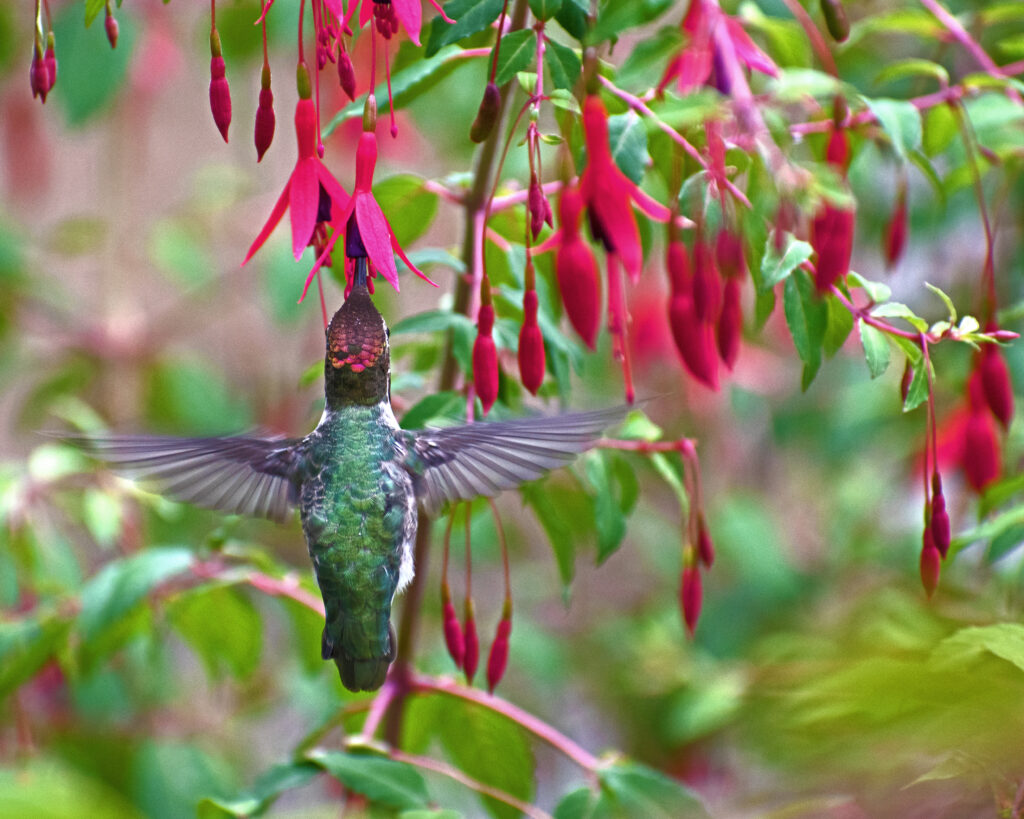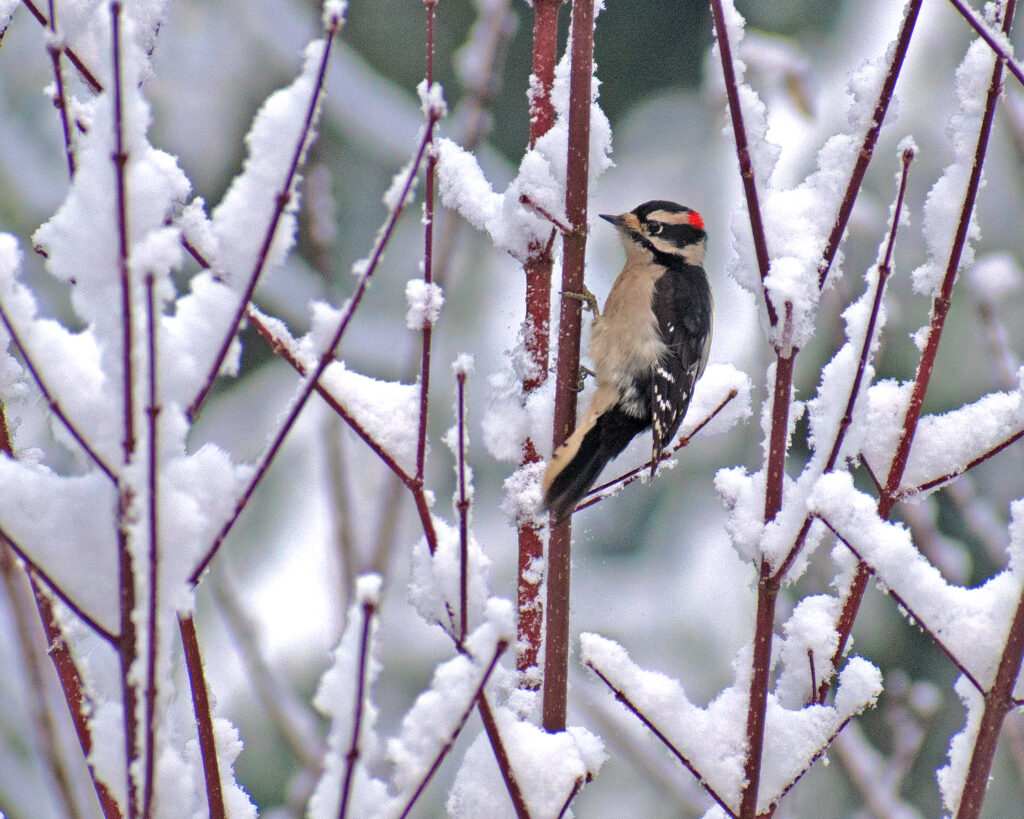Birds
Birds native to the Pacific Northwest include Mourning Doves, Steller’s Jay, Flickers, Woodpeckers, Crows, Chickadees, Finches, Sparrows, Nuthatches, Wrens, Juncos and Warblers.
Birds feed on insects, caterpillars, berries and nuts. It is important that other pollinators thrive not only for their pollination skills, but as food for birds.
Birds also feed on nectar just like bees. As they feed, the nectar sticks to their bodies and they carry it to the next plant. There is even a name for it – ornithophily. Like many pollinator-plant relationships, birds are attracted to certain flowers and plants. Some native Pacific NW plants that attract birds are Bitter Cherry, Snowberry, Pacific Dogwood, Huckleberry and Oregon Grape.








Create a healthy habitat for birds by planting native plants and avoiding pesticides. Put up a birdbath so birds have water. Keep your cat indoors and plant trees and large bushes to allow birds to avoid predators. Many birds are cavity-nesting and would benefit from a bird house where they can raise their babies. More bird habitat tips.
Hummingbirds
Hummingbirds are fantastic pollinators. Their long bills and tongues allow them to retrieve nectar from tubular flowers that other pollinators cannot reach. They are small, fast, and have the ability to hover. Hummingbirds are attracted to the color red and recognize red flowers as nectar sources.
At night hummingbirds go into a state called torpor. Their long bills and their bodies go into a deep sleep-like state to conserve energy. During torpor, their body temperature and heart rate drop significantly, and their metabolism slows down by up to 95%. A bird in torpor can appear dead, often hanging upside down. They do not forage for food at night, but will often come out of torpor early to get food.
Anna’s hummingbird. The only hummingbird that does not migrate from the Pacific NW in the winter is called Anna’s hummingbird. These birds love our native flowering currant, salmonberry and penstemon, as well as non-native plants such as fuchsias and crocosmia. In the winter, food sources can be scarce and they rely on hummingbird feeders for nourishment.
Hang a Hummingbird Feeder
A hummingbird feeder can provide a food source in the winter months and attract hummingbirds to your yard. It helps if it’s red!
- Keep your hummingbird feeder available all year long. In the winter, the birds have trouble finding enough food.
- Keep your hummingbird feeder clean. Wash it with soap and warm water between each filling.
- Use a proper sweet solution. Four parts water to one part sugar. Use plain granulated sugar. Raw sugar, honey, agave and other sweeteners are not good for hummingbirds.
- In cold climates, feeders can freeze in the winter. Maintain more than one feeder and rotate them when you see one freezing. Use a sock or other external heat sources, such as Christmas lights or an outside heater, to keep the feeder warm.
- Keep an eye on your feeder to make sure it doesn’t sit empty for two long.
Bird photos courtesy of Bill McClain.
